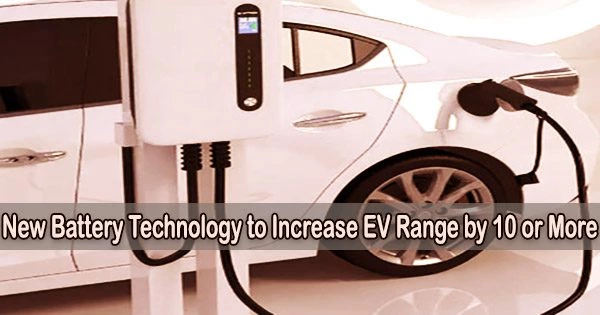With local sales hitting 108,000 units and global sales topping $1 trillion (approximate KRW 1,283 trillion) in 2022, the market for electric vehicles has been expanding rapidly. Clearly, there is a rising need for large-capacity batteries that can increase the range of electric vehicles.
A functional polymeric binder for stability, a team of researchers from POSTECH and Sogang University recently created high-capacity anode material, and it has the potential to at least 10-fold enhance the current EV range.
A research team led by POSTECH professors Soojin Park (Department of Chemistry) and Youn Soo Kim (Department of Materials Science and Engineering) and Professor Jaegeon Ryu (Department of Chemical and Biomolecular Engineering) of Sogang University developed charged polymeric binder for a high-capacity anode material that is both stable and reliable, offering a capacity that is 10 times or higher than that of conventional graphite anodes.
This innovation was made possible by layering charged polymers in place of graphite while maintaining stability and reliability. The study’s findings were presented in an article on Advanced Functional Materials’ front cover.
High-energy-density lithium-ion batteries must be made with high-capacity anode materials like silicon, which have at least ten times the capacity of graphite or other anode materials currently on the market.
The problem here is that performance and stability of the battery are threatened by the volume growth of high-capacity anode materials during the reaction with lithium. Researchers have been looking towards polymer binders that can successfully limit the volumetric expansion to help alleviate this problem.
However, only chemical crosslinking and hydrogen bonds have been the subject of investigation up to this point. Chemical crosslinking solidifies binder molecules by forming covalent bonds between them, but it has a fatal flaw: if the linkages are broken, they cannot be repaired.
On the other hand, hydrogen bonding is a reversible secondary bonding between molecules based on electronegativity differences, but its strength (10-65 kJ/mol) is relatively weak.
The new polymer developed by the research team not only utilizes hydrogen bonding but also takes advantage of Coulombic forces (attraction between positive and negative charges). These forces have a strength of 250 kJ/mol, much higher than that for hydrogen bonding, yet they are reversible, making it easy to control volumetric expansion.
The layering-charged polymers are arranged alternately with positive and negative charges to effectively bond with the anode, which has a surface that is primarily negatively charged on high-capacity anode materials.
In order to control the physical characteristics and promote Li-ion diffusion, the scientists also added polyethylene glycol, which produced the thick, high-capacity electrode and highest energy density found in Li-ion batteries.
Professor Soojin Park explained, “The research holds the potential to significantly increase the energy density of lithium-ion batteries through the incorporation of high-capacity anode materials, thereby extending the driving range of electric vehicles. Silicon-based anode materials could potentially increase driving range at least tenfold.”
This study was conducted with the support from the Ministry of Science and ICT, the Nano-Material Technology Development Program, and the National Research Laboratory for Future Technology of Korea.





